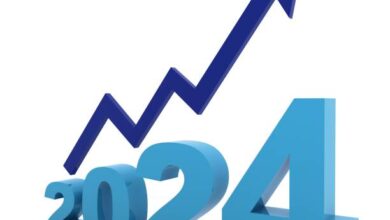Social Economics and Cultural Economics Influence One Another.
SOCIAL ECONOMICS

In today’s interconnected world, it’s nearly impossible to talk about one aspect of society without considering its relationship to others. This is especially true when it comes to social economic, and cultural factors. These three elements are deeply intertwined and often influence one another in complex ways. In this blog post, we will explore the interconnectedness of these factors and how changes in one can have a ripple effect on the others. By understanding these connections, we can gain a better understanding of the world we live in and the forces that shape it. So, let’s dive in and discover how economic, social, and cultural trends influence one another.
Defining Social Economics and Cultural Factors
Social economics and cultural factors are integral components of any society, playing a vital role in shaping its identity, development, and overall well-being. Let’s take a moment to define each of these factors individually before exploring their interconnectedness.
Economic factors refer to the financial systems and activities within a society that impact production, distribution, and consumption of goods and services. This includes elements such as GDP, employment rates, inflation, and trade policies. Essentially, economic factors revolve around the allocation and utilization of resources within a society.
Social factors, on the other hand, pertain to the human interactions, relationships, and institutions that characterize a society. This includes elements such as demographics, education, healthcare, social norms, and cultural values. Social factors encompass the social fabric of a community and how people relate to one another.
Cultural factors encompass the beliefs, customs, practices, and values shared by a particular group of people. This includes elements such as language, religion, traditions, art, music, and literature. Culture plays a fundamental role in shaping a society’s identity, shaping the way people think, behave, and interact.
While these three factors are distinct, they are intricately intertwined, constantly influencing and being influenced by one another. Changes in economic conditions can impact social dynamics and cultural practices. For example, a recession can lead to job losses and economic uncertainty, resulting in increased stress and strained social relationships. This, in turn, may affect cultural values and attitudes towards work, leisure, and social interactions.
Conversely, social and cultural factors can also influence economic trends. For instance, social movements advocating for gender equality can drive changes in employment practices and wages, leading to economic empowerment and improved economic conditions for women. Cultural shifts towards sustainability can drive changes in consumer behavior, influencing economic demand for environmentally friendly products and services.
In essence, economic, social, and cultural factors are interconnected and constantly shaping and reshaping one another. Understanding these interdependencies is essential for comprehending the complexities of our world and identifying the levers for positive change. In the following sections, we will delve deeper into the relationship between these factors and explore real-life examples that highlight their influence and intersection.

Understanding the Relationship Between Social Economics and Cultural Factors
Social Economics and cultural factors are like a tightly woven fabric, with each thread influencing and being influenced by the others. In order to truly grasp the complexities of our world, we must understand the relationship between these factors and how they intersect.
At its core, the relationship between economic, social, and cultural factors can be understood as a cycle of cause and effect. Economic conditions shape social dynamics, which in turn impact cultural practices, which then feed back into the economy. This constant interplay between the three factors creates a web of interconnectedness that can be both fascinating and complex to unravel.
For example, let’s consider the impact of economic factors on social and cultural trends. During times of economic uncertainty, such as a recession, people may face job losses and financial insecurity. This can lead to increased stress and strain on social relationships, as individuals and families struggle to make ends meet. In turn, these changes in social dynamics may influence cultural values and attitudes towards work, leisure, and social interactions. For instance, a recession might lead to a shift towards more frugal spending habits and a renewed emphasis on self-sufficiency and community support.
Conversely, social and cultural factors can also have a significant influence on economic trends. Take the example of social movements advocating for gender equality. These movements have been instrumental in driving changes in employment practices and wages, leading to greater economic empowerment for women. Similarly, cultural shifts towards sustainability and environmental awareness have influenced consumer behavior, creating a demand for environmentally friendly products and services. This, in turn, has driven economic growth in industries focused on sustainability.
In summary, the relationship between economic, social, and cultural factors is a dynamic and complex one. Changes in one factor have the potential to cause ripples throughout the others, creating a constant cycle of influence and change. By understanding this relationship, we can better comprehend the forces that shape our world and identify opportunities for positive change.

Examples of How Social Economics Factors Influence Cultural Trends
Economic factors have a significant impact on social economics and cultural trends. Let’s explore some examples to better understand how changes in the economy can influence the way we live, interact, and express our values.
One example is the impact of a recession on social relationships. During economic downturns, job losses and financial insecurity can cause increased stress and strain on individuals and families. This can lead to a shift in social dynamics, with people feeling less inclined to engage in leisure activities or socialize with others. Instead, they may focus more on finding stable employment and meeting their basic needs. This change in social behavior reflects the economic conditions and the prioritization of financial security over socializing.
Similarly, economic factors can shape cultural values and attitudes. In times of economic uncertainty, frugal spending habits often emerge as people prioritize saving money and cutting back on non-essential expenses. This can lead to a cultural shift towards more practical and cost-conscious behavior, where the emphasis is on being resourceful and making the most of limited resources. For instance, during an economic downturn, we might see an increased interest in DIY projects, community sharing initiatives, and the resurgence of traditional skills that promote self-sufficiency.
Another example of how economic factors influence social and cultural trends is the impact of income inequality. When there is a significant gap between the rich and the poor, it can create social divisions and increase social tensions. This can lead to cultural shifts in attitudes towards wealth and success. For instance, a society with high levels of income inequality may see a rise in movements advocating for wealth redistribution and greater economic equality. These movements can influence social dynamics and shape cultural values around fairness and social justice.
Overall, economic factors play a vital role in shaping social interactions, cultural practices, and attitudes. Changes in the economy can have a ripple effect on our daily lives, influencing how we prioritize our time, interact with others, and express our values. By recognizing these connections, we can better understand the complex web of relationships between economic, social, and cultural factors and how they influence one another.

Examples of How Social and Cultural Factors Influence Economic Trends
When examining the intricate web of interconnectedness between social economics and cultural factors, it becomes clear that these elements do not exist in isolation. In fact, social and cultural factors have a profound influence on economic trends. Let’s explore some examples to better understand how these factors intersect and shape our economic landscape.
One significant example of social economics and cultural factors influencing economic trends is the rise of the conscious consumer. In recent years, there has been a growing awareness and concern for social and environmental issues. This shift in cultural values has led consumers to prioritize sustainability, ethical sourcing, and responsible business practices when making purchasing decisions. As a result, businesses have had to adapt and incorporate these values into their operations to remain competitive. This has created economic opportunities for companies that embrace sustainability, leading to the growth of eco-friendly industries and the demand for sustainable products and services.
Another example is the influence of cultural diversity on economic growth. When a society embraces and celebrates diversity, it fosters innovation, creativity, and a vibrant cultural exchange. This cultural richness attracts talent and investment from around the world, creating a thriving economy. In contrast, societies that resist diversity and have strict cultural norms and practices may find themselves at a disadvantage in the global marketplace. Embracing diversity and creating inclusive environments can, therefore, have a significant positive impact on economic growth and prosperity.
Social and cultural factors can also influence economic trends through social movements and activism. Movements advocating for social justice, gender equality, and human rights have the power to shape policies and drive systemic change. For instance, the civil rights movement in the United States played a pivotal role in breaking down barriers to economic opportunities for marginalized communities. By addressing systemic inequalities, social movements can create a more equitable economic landscape and contribute to sustainable economic growth.
In summary, social and cultural factors have a profound influence on economic trends. Cultural values, consumer behavior, and social movements all shape the way we conduct business, make economic decisions, and prioritize economic development. By recognizing the power of these factors and embracing their influence, we can create a more inclusive and sustainable economic future.

Examining the Intersection of Social Economics and Cultural Factors in Real Life Scenarios
When we look at the interconnectedness of social economic and cultural factors, it’s essential to examine real-life scenarios that illustrate the intricate relationship between these elements. By delving into specific examples, we can better understand how these factors intersect and shape our daily lives.
Let’s consider a real-life scenario: the rise of the gig economy. Economic factors, such as technological advancements and changes in labor markets, have enabled the gig economy to flourish. This shift towards freelancing and short-term contracts has significant social implications. It offers individuals more flexibility and autonomy over their work, allowing them to pursue multiple income streams and create a work-life balance that suits their needs. From a cultural standpoint, the gig economy reflects a changing attitude towards work, challenging traditional notions of employment and career paths. It emphasizes self-reliance and entrepreneurial spirit, with individuals taking on multiple roles and constantly adapting to new opportunities.
Another example to examine is the impact of social media on consumer behavior. Social factors, such as the increasing use of social media platforms, have transformed the way we engage with brands and make purchasing decisions. The influence of social media influencers and online reviews has become a powerful economic force. Consumers now rely on the opinions and recommendations of their online networks when making buying choices.
This shift in consumer behavior has forced businesses to adapt their marketing strategies, invest in online presence, and leverage social media platforms to reach their target audience. From a cultural perspective, this trend highlights the power of connectivity and the democratization of influence. It has reshaped cultural norms around marketing and advertising, blurring the line between traditional media channels and user-generated content.
In yet another real-life scenario, we can look at the impact of cultural values on the renewable energy industry. Cultural factors, such as a growing awareness of climate change and a desire for sustainability, have influenced consumer preferences and economic trends. People’s cultural values and concern for the environment have driven the demand for renewable energy sources and environmentally friendly products.
As a result, the renewable energy industry has experienced significant growth, with governments and businesses investing in sustainable energy solutions. This cultural shift towards sustainability has not only transformed the economic landscape but has also led to changes in social dynamics, with more individuals and communities advocating for eco-friendly practices.
These real-life scenarios demonstrate the intricate interplay between economic, social, and cultural factors. Changes in one aspect can trigger a domino effect that influences the others, shaping our behavior, attitudes, and economic choices.






It’s appropriate time to make a few plans for the future and it is time to be happy. I’ve learn this post and if I could I want to suggest you few fascinating things or tips. Perhaps you can write next articles referring to this article. I want to learn even more things approximately it!
I like this web site its a master peace ! Glad I discovered this on google .
Needed to put you this little bit of note to help give thanks the moment again for those beautiful strategies you have shared on this site. It was certainly remarkably open-handed with people like you to provide freely all a lot of folks would have supplied as an e-book to end up making some dough for their own end, notably considering the fact that you might well have done it in the event you desired. Those techniques additionally acted like the great way to know that other people online have a similar dreams just as my own to figure out lots more in regard to this issue. I am certain there are lots of more pleasant moments ahead for individuals who examine your blog post.
I reckon something really interesting about your web blog so I bookmarked.
F*ckin’ awesome issues here. I’m very glad to see your post. Thank you a lot and i’m taking a look ahead to contact you. Will you kindly drop me a e-mail?
What Is ZenCortex? ZenCortex is an ear health booster that protects ears from potential damage and improves your hearing health.
Howdy! Quick question that’s completely off topic. Do you know how to make your site mobile friendly? My weblog looks weird when browsing from my iphone4. I’m trying to find a template or plugin that might be able to fix this problem. If you have any suggestions, please share. Many thanks!
Your place is valueble for me. Thanks!…
What is Java Burn? Java Burn, an innovative weight loss supplement, is poised to transform our perception of fat loss.
It’s a pity you don’t have a donate button! I’d without a doubt donate to this brilliant blog! I suppose for now i’ll settle for book-marking and adding your RSS feed to my Google account. I look forward to fresh updates and will share this site with my Facebook group. Chat soon!
Howdy very cool site!! Guy .. Beautiful .. Superb .. I will bookmark your site and take the feeds additionallyKI’m glad to search out numerous helpful info here within the post, we need develop more techniques in this regard, thanks for sharing. . . . . .
What Is FitSpresso? FitSpresso is a natural weight loss supplement that alters the biological cycle of the body to burn more calories and attain a slim and healthy body
Lottery Defeater: What Is It? A software tool called Lottery Defeater was created to raise the odds of winning lottery tickets.
Greetings! Very helpful advice on this article! It is the little changes that make the biggest changes. Thanks a lot for sharing!
I am constantly browsing online for articles that can benefit me. Thanks!
naturally like your web site but you have to check the spelling on several of your posts. Many of them are rife with spelling issues and I find it very bothersome to tell the truth nevertheless I’ll surely come back again.